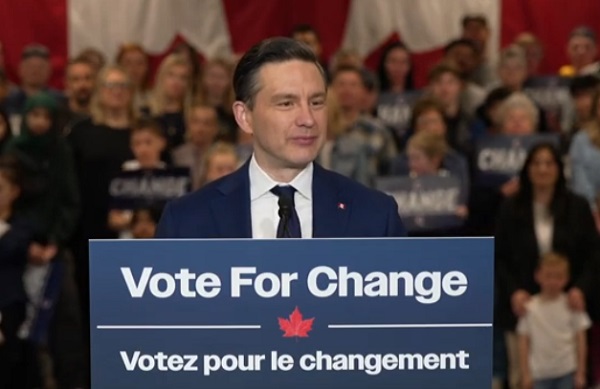Alberta
“Butt out, Creeps”: ALERT issues sextortion warning

From ALERT (Alberta Law Enforcement Response Team)
While the number of sextortion cases remains high for ALERT’s Internet Child Exploitation team, the province-wide unit is launching a multi-media awareness campaign that says “butt out, creeps”.
“Butt out, creeps” is campaign to raise awareness and help youth get smart about sextortion. ALERT worked with DDB Canada to research and develop the campaign, which officially launched on social media channels earlier this month and has already generated over one million impressions.
The ads, featuring dancing eggplant and peach emoji characters, are running on Snapchat, TikTok, YouTube, online gaming platforms and can also be found on the web at buttoutcreeps.ca. The singing eggplant tells kids, “don’t be a wang, don’t be a boob, sending nude pics to strangers makes you look like a newb”. Meanwhile the peach character sings, “if someone you know asks you for a nude, tell someone you trust, then ghost that weird dude”.
“Sextortion cases are completely debilitating for youth and have become all too frequent – and it is happening inside our homes. We are hoping this campaign allows us to connect with youth online, and provide education and supporting resources in a manner that is accessible and noteworthy,” said Supt. Marc Cochlin, ALERT CEO.
The ads are aimed towards connecting with youth between 10 and 17 years of age, who ICE has found to be the primary target of sextortion cases.
Sextortion is where children, specifically boys, are being coerced into sending explicit images online and are then extorted for money, e-transfers, or gift cards. Predators often pose as girls of a similar age and use fake accounts to target youth. Investigating sextortion is challenging as the suspects are believed to be operating overseas, much the same manner as more traditional phone scammers.
The campaign’s primary message is to dissuade youth from sharing nudes online, but to “get smart about sextortion” by following a link to our website with resources and tips.
Last year, ICE received nearly 3,000 case referrals. Record numbers for Alberta as online child sexual exploitation offences have increased by more than 185% in the past five years.
While the ads are designed to connect more with youth, parents also play an important role in prevention. Studies show that 1 in 3 victims of sextortion never told anyone, largely due to embarrassment or shame. Resources for parents are also posted online at buttoutcreeps.ca.
About DDB Canada
DDB Canada is part of DDB Worldwide, one of the world’s largest and most influential advertising and marketing networks. Known for advertising that generates significant results for clients, DDB Canada’s fundamental belief is that creativity is the most powerful force in business. Founded in 1949, DDB is part of the Omnicom Group (NYSE: OMC).
About ALERT
ALERT was established and is funded by the Alberta Government and is a compilation of the province’s most sophisticated law enforcement resources committed to tackling serious and organized crime. Integrated ICE teams investigate offences related to the exploitation of children over the Internet.
Alberta
Red Deer Justice Centre Grand Opening: Building access to justice for Albertans

The new Red Deer Justice Centre will help Albertans resolve their legal matters faster.
Albertans deserve to have access to a fair, accessible and transparent justice system. Modernizing Alberta’s courthouse infrastructure will help make sure Alberta’s justice system runs efficiently and meets the needs of the province’s growing population.
Alberta’s government has invested $191 million to build the new Red Deer Justice Centre, increasing the number of courtrooms from eight to 12, allowing more cases to be heard at one time.
“Modern, accessible courthouses and streamlined services not only strengthen our justice
system – they build safer, stronger communities across the province. Investing in the new Red Deer Justice Centre is vital to helping our justice system operate more efficiently, and will give people in Red Deer and across central Alberta better access to justice.”

Government of Alberta and Judiciary representatives with special guests at the Red Deer Justice Centre plaque unveiling event April 22, 2025.
On March 3, all court services in Red Deer began operating out of the new justice centre. The new justice centre has 12 courtrooms fully built and equipped with video-conference equipment to allow witnesses to attend remotely if they cannot travel, and vulnerable witnesses to testify from outside the courtroom.
The new justice centre also has spaces for people taking alternative approaches to the traditional courtroom trial process, with the three new suites for judicial dispute resolution services, a specific suite for other dispute resolution services, such as family mediation and civil mediation, and a new Indigenous courtroom with dedicated venting for smudging purposes.
“We are very excited about this new courthouse for central Alberta. Investing in the places where people seek justice shows respect for the rights of all Albertans. The Red Deer Justice Centre fills a significant infrastructure need for this rapidly growing part of the province. It is also an important symbol of the rule of law, meaning that none of us are above the law, and there is an independent judiciary to decide disputes. This is essential for a healthy functioning democracy.”
“Public safety and access to justice go hand in hand. With this investment in the new Red Deer Justice Centre, Alberta’s government is ensuring that communities are safer, legal matters are resolved more efficiently and all Albertans get the support they need.”
“This state-of-the-art facility will serve the people of Red Deer and surrounding communities for generations. Our team at Infrastructure is incredibly proud of the work done to plan, design and build this project. I want to thank everyone, at all levels, who helped make this project a reality.”
Budget 2025 is meeting the challenge faced by Alberta with continued investments in education and health, lower taxes for families and a focus on the economy.

Quick facts
- The new Red Deer Justice Centre is 312,000 sq ft (29,000 m2). (The old courthouse is 98,780 sq ft (9,177 m2)).
- The approved project funding for the Red Deer Justice Centre is about $191 million.
Alberta
CPP another example of Albertans’ outsized contribution to Canada

From the Fraser Institute
By Tegan Hill
Amid the economic uncertainty fuelled by Trump’s trade war, its perhaps more important than ever to understand Alberta’s crucial role in the federation and its outsized contribution to programs such as the Canada Pension Plan (CPP).
From 1981 to 2022, Albertan’s net contribution to the CPP—meaning the amount Albertans paid into the program over and above what retirees in Alberta received in CPP payments—was $53.6 billion. In 2022 (the latest year of available data), Albertans’ net contribution to the CPP was $3.0 billion.
During that same period (1981 to 2022), British Columbia was the only other province where residents paid more into the CPP than retirees received in benefits—and Alberta’s contribution was six times greater than B.C.’s contribution. Put differently, residents in seven out of the nine provinces that participate in the CPP (Quebec has its own plan) receive more back in benefits than they contribute to the program.
Albertans pay an outsized contribution to federal and national programs, including the CPP because of the province’s relatively high rates of employment, higher average incomes and younger population (i.e. more workers pay into the CPP and less retirees take from it).
Put simply, Albertan workers have been helping fund the retirement of Canadians from coast to coast for decades, and without Alberta, the CPP would look much different.
How different?
If Alberta withdrew from the CPP and established its own standalone provincial pension plan, Alberta workers would receive the same retirement benefits but at a lower cost (i.e. lower CPP contribution rate deducted from our paycheques) than other Canadians, while the contribution rate—essentially the CPP tax rate—to fund the program would likely need to increase for the rest of the country to maintain the same benefits.
And given current demographic projections, immigration patterns and Alberta’s long history of leading the provinces in economic growth, Albertan workers will likely continue to pay more into the CPP than Albertan retirees get back from it.
Therefore, considering Alberta’s crucial role in national programs, the next federal government—whoever that may be—should undo and prevent policies that negatively impact the province and Albertans ability to contribute to Canada. Think of Bill C-69 (which imposes complex, uncertain and onerous review requirements on major energy projects), Bill C-48 (which bans large oil tankers off B.C.’s northern coast and limits access to Asian markets), an arbitrary cap on oil and gas emissions, numerous other “net-zero” targets, and so on.
Canada faces serious economic challenges, including a trade war with the United States. In times like this, it’s important to remember Alberta’s crucial role in the federation and the outsized contributions of Alberta workers to the wellbeing of Canadians across the country.
-

 2025 Federal Election2 days ago
2025 Federal Election2 days agoTrump Has Driven Canadians Crazy. This Is How Crazy.
-

 2025 Federal Election2 days ago
2025 Federal Election2 days agoThe Anhui Convergence: Chinese United Front Network Surfaces in Australian and Canadian Elections
-

 Automotive1 day ago
Automotive1 day agoHyundai moves SUV production to U.S.
-

 Entertainment1 day ago
Entertainment1 day agoPedro Pascal launches attack on J.K. Rowling over biological sex views
-

 2025 Federal Election24 hours ago
2025 Federal Election24 hours agoAs PM Poilievre would cancel summer holidays for MP’s so Ottawa can finally get back to work
-

 2025 Federal Election2 days ago
2025 Federal Election2 days agoPolls say Canadians will give Trump what he wants, a Carney victory.
-

 2025 Federal Election2 days ago
2025 Federal Election2 days agoCarney Liberals pledge to follow ‘gender-based goals analysis’ in all government policy
-

 2025 Federal Election1 day ago
2025 Federal Election1 day agoThe Cost of Underselling Canadian Oil and Gas to the USA



